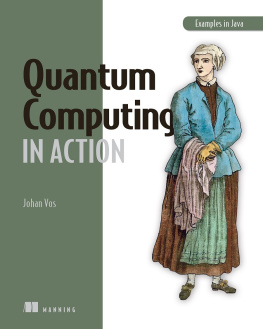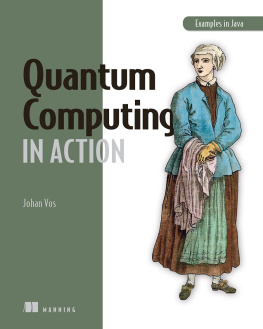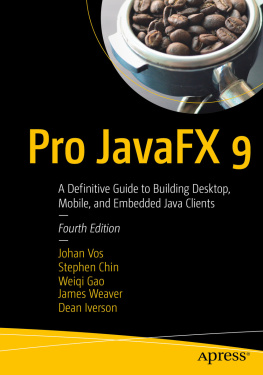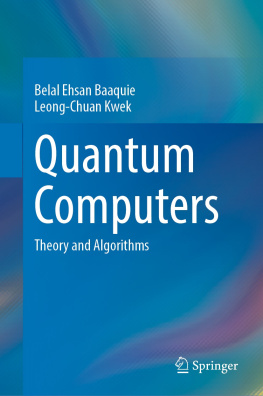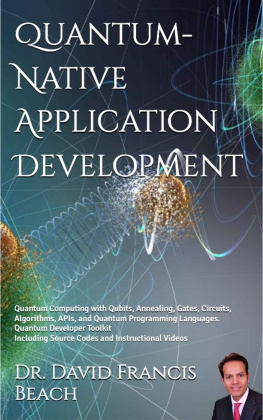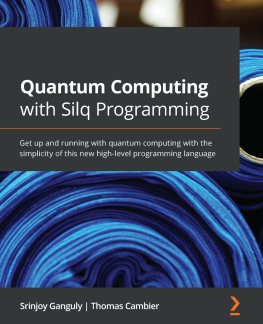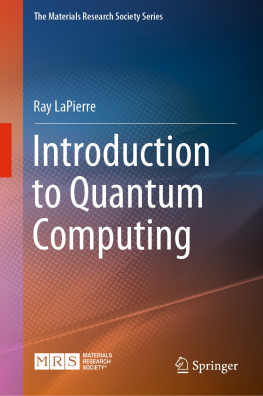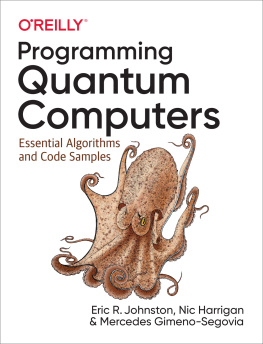Johan Vos - Quantum Computing in Action
Here you can read online Johan Vos - Quantum Computing in Action full text of the book (entire story) in english for free. Download pdf and epub, get meaning, cover and reviews about this ebook. City: Shelter Island, NY, year: 2022, publisher: Manning, genre: Computer. Description of the work, (preface) as well as reviews are available. Best literature library LitArk.com created for fans of good reading and offers a wide selection of genres:
Romance novel
Science fiction
Adventure
Detective
Science
History
Home and family
Prose
Art
Politics
Computer
Non-fiction
Religion
Business
Children
Humor
Choose a favorite category and find really read worthwhile books. Enjoy immersion in the world of imagination, feel the emotions of the characters or learn something new for yourself, make an fascinating discovery.
Quantum Computing in Action: summary, description and annotation
We offer to read an annotation, description, summary or preface (depends on what the author of the book "Quantum Computing in Action" wrote himself). If you haven't found the necessary information about the book — write in the comments, we will try to find it.
In Quantum Computing in Action you will learn:
An introduction to the core concepts of quantum computing
Qubits and quantum gates
Superposition, entanglement, and hybrid computing
Quantum algorithms including Shors, Deutsch-jozsa, and Grovers search
Quantum Computing in Action shows you how to leverage your existing Java skills into writing your first quantum software, so youre ready for the quantum revolution. This book is focused on practical implementations of quantum computing algorithmstheres no deep math or confusing theory. Using Strange, a Java-based quantum computer simulator, youll go hands-on with quantum computings core components including qubits and quantum gates.
Purchase of the print book includes a free eBook in PDF, Kindle, and ePub formats from Manning Publications.
About the technology
Quantum computing promises unimaginably fast performance for tasks like encryption, scientific modeling, manufacturing logistics, financial modeling, and AI. Developers can explore quantum computing now using free simulators, and increasingly powerful true quantum systems are gradually becoming available for production use. This book gives you a head start on quantum computing by introducing core concepts, key algorithms, and the most beneficial use cases.
About the book
Quantum Computing in Action is a gentle introduction to the ideas and applications of quantum computing. After briefly reviewing the science that makes quantum tick, it guides you through practical implementations of quantum computing algorithms. Youll write your first quantum code and explore qubits and quantum gates with the Java-based Strange quantum simulator. Youll enjoy the interesting examples and insightful explanations as you create quantum algorithms using standard Java and your favorite IDE and build tools.
Whats inside
An introduction to the core concepts of quantum computing
Qubits and quantum gates
Superposition, entanglement, and hybrid computing
Quantum algorithms including Shors, Deutsch-jozsa, and Grovers search
About the reader
For Java developers. No advanced math knowledge required.
About the author
Johan Vos is a cofounder of Gluon, a Java technology company. He is a Java Champion and holds an MSc in Mining Engineering and a PhD in Applied Physics.
Table of Contents
PART 1 QUANTUM COMPUTING INTRODUCTION
1 Evolution, revolution, or hype?
2 Hello World, quantum computing style
3 Qubits and quantum gates: The basic units in quantum computing
PART 2 FUNDAMENTAL CONCEPTS AND HOW THEY RELATE TO CODE
4 Superposition
5 Entanglement
6 Quantum networking: The basics
PART 3 QUANTUM ALGORITHMS AND CODE
7 Our HelloWorld, explained
8 Secure communication using quantum computing
9 Deutsch-Jozsa algorithm
10 Grovers search algorithm
11 Shors algorithm
Johan Vos: author's other books
Who wrote Quantum Computing in Action? Find out the surname, the name of the author of the book and a list of all author's works by series.

